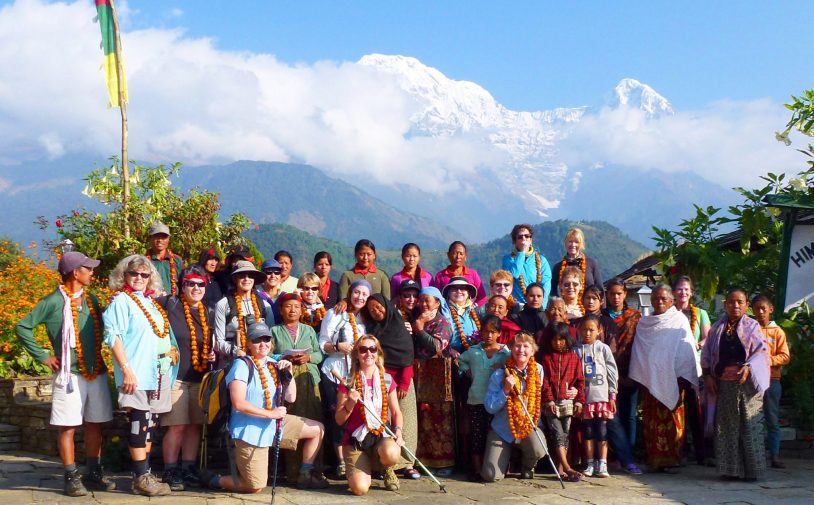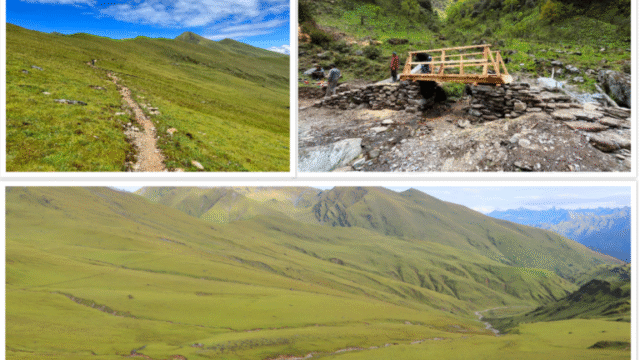Tourism in Nepal, renowned for its majestic landscapes, rich cultural heritage, and spiritual significance, has been a significant contributor to the nation’s economy. However, beyond its economic impact, tourism has brought about profound benefits to local communities across the country. This article explores how tourism has positively influenced the lives of residents, providing a detailed overview of the multifaceted benefits experienced by these communities.
One of the most immediate benefits of tourism is job creation. Tourism-related industries, including hospitality, transportation, and tour guiding, have generated thousands of jobs for locals. In regions like the Annapurna and Everest regions, trekking guides, porters, and lodge owners rely heavily on tourism for their livelihoods. For instance, in the village of Namche Bazaar, the influx of trekkers has led to a surge in employment opportunities, allowing residents to earn a stable income.
Tourism has spurred the growth of local businesses. Small-scale enterprises such as souvenir shops, local eateries, and craft centers have flourished due to tourist demand. In Thamel, Kathmandu, and Pokhara’s Lakeside area, a plethora of shops and restaurants cater to tourists, providing a significant boost to the local economy. This growth has encouraged entrepreneurship and allowed many locals to invest in and manage their businesses.
Tourism has played a crucial role in the preservation and promotion of Nepal’s cultural heritage. Historical sites and traditional practices are often maintained and restored due to the interest and funding brought by tourists. The restoration projects in Bhaktapur Durbar Square and Patan Durbar Square have been supported by tourism revenue, ensuring that these ancient sites remain intact for future generations.
Tourism fosters cultural exchange between visitors and locals, providing a platform for mutual learning. Local communities have the opportunity to showcase their traditions, festivals, and customs to an international audience. This interaction not only enriches tourists’ experiences but also instills a sense of pride among locals about their cultural heritage. Educational programs, such as language courses and cultural workshops, have emerged to facilitate better communication and understanding between tourists and locals.
The development of infrastructure driven by tourism benefits local communities. Investments in roads, airports, and public facilities, initially made to enhance tourist experiences, have improved accessibility and living conditions for locals. For example, the construction of new roads in remote areas like Mustang and Dolpo has not only made travel easier for tourists but also provided better access to markets, healthcare, and education for residents.
Tourism has prompted improvements in public services. In areas with high tourist traffic, such as Chitwan and Lumbini, there has been a noticeable enhancement in sanitation, waste management, and emergency services. The revenue generated from tourism taxes and fees is often reinvested in these services, contributing to a higher quality of life for local communities.
Tourism has also encouraged environmental conservation efforts. National parks and protected areas, like Sagarmatha and Langtang, receive funding from tourism that is used for conservation programs. Local communities are involved in conservation activities, including anti-poaching efforts and waste management initiatives. These efforts help preserve the natural beauty of Nepal and ensure that local wildlife and ecosystems are protected.
The rise in eco-tourism has led to the adoption of sustainable practices within local communities. Many tourism businesses are now focusing on reducing their environmental impact by implementing waste reduction programs, using renewable energy sources, and promoting eco-friendly practices. This shift towards sustainability not only benefits the environment but also provides locals with knowledge and tools to maintain their natural surroundings.
While the benefits of tourism are substantial, it is essential to address the challenges associated with it. Issues such as overtourism, cultural erosion, and environmental degradation can arise if not managed properly. Local communities, in collaboration with government bodies and tourism organizations, are increasingly working towards finding solutions to these challenges. Initiatives include promoting responsible tourism practices, encouraging off-the-beaten-path travel, and involving communities in decision-making processes.
Looking ahead, there are numerous opportunities for local communities to further benefit from tourism. Sustainable tourism practices, community-based tourism projects, and increased focus on cultural and environmental preservation can enhance the positive impacts of tourism. By fostering collaboration between tourists, businesses, and residents, Nepal can continue to harness tourism as a tool for social and economic development while preserving its unique heritage and natural beauty.
Tourism in Nepal has brought significant benefits to local communities, from economic gains and business growth to cultural preservation and improved infrastructure. While challenges exist, the positive impacts are evident in the enhanced quality of life for many Nepalese. By continuing to focus on sustainable and community-oriented tourism practices, Nepal can ensure that the benefits of tourism are shared equitably and that its rich cultural and natural heritage is preserved for future generations.






